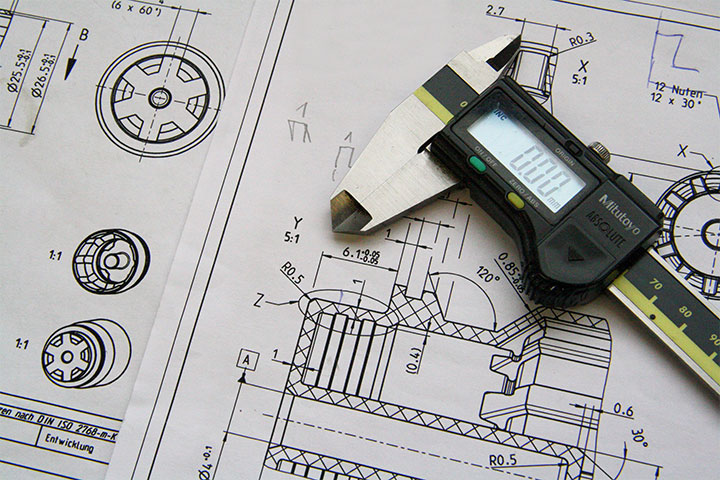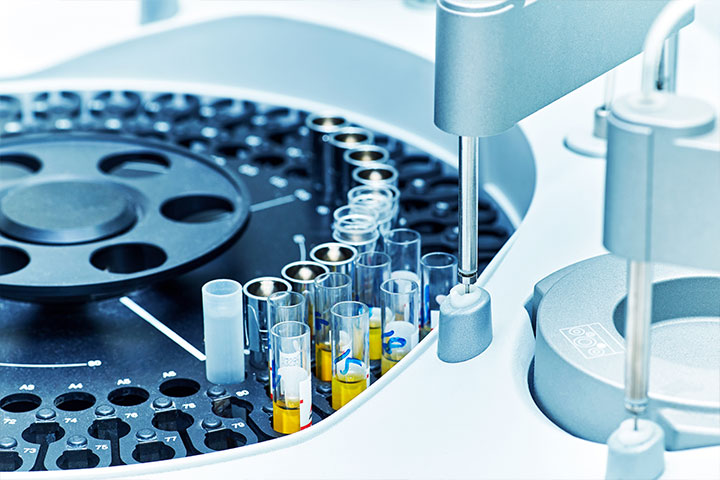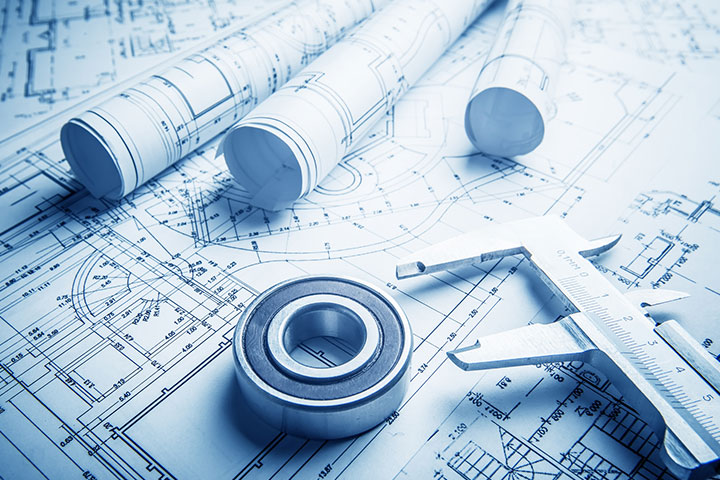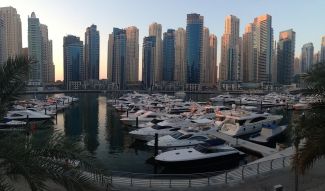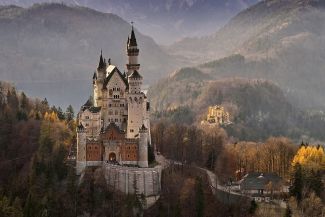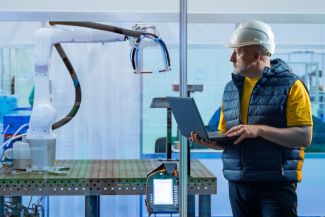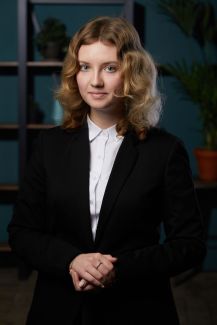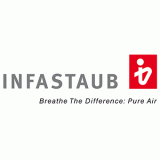
When developing a new product and launching it on the market, it is necessary to assess the requirements in different regions of the world and carry out appropriate tests. According to the nomenclature of goods subject to conformity in the EAEU countries, most types of luminaires, bulbs and LED modules are subject to EAC certification according to the technical regulations of the Customs Union.
Legal framework
Luminaires, bulbs and LED-modules count as low-voltage equipment and are placed on the market after conformity assessment (EAC Certification or EAC Declaration) in accordance to the requirements of the following technical regulations:
- TR CU 004/2011 "On safety of low voltage equipment"
- TR CU 020/2011 "On electromagnetic compatibility"
- TR ZU 012/2011 "On safety of the equipment for operation in explosive atmospheres"
- TR EAEU 037/2016 "On restriction of the use of certain hazardous substances in electrical and electronic equipment"
- TR EAEU 048/2019 "The requirements for the energy efficiency of energy consuming devices"
Application area
According to the requirements of current legislation, mandatory EAC certification is required of luminaires equipped with lamps of the following types:
- light bulbs
- fluorescent lamps, also with built-in ballasts
- LED lights
EAC certification applies to the following luminaires (regardless of the type of lamp used):
- portable lamps
- stationary lamps
- equipment for lighting aquariums, swimming pools
- lighting equipment for professional photography
additional equipment must also be certified:
- power supplies
- transformers
- dimmers
Mandatory EAC Certification of luminaires, bulbs and LED modules
Luminaires and bulbs are part of the low-voltage equipment group and are subject to mandatory EAC certification. Those kind of products are connected to the grid and are operated with:
- direct current - from 50 to 1.000 V
- alternating current - from 75 to 1.500 V
The EAC Certification is carried out according to the following schemes:
| scheme | description |
|---|---|
| 1C |
is intended for series production. The EAC certificate is issued for a maximum of 5 years. Samplesare tested and a manufacturing audit is conducted. The EAC Certificate is issued on the basis of test reports, examination of the technical documentation and the results of the audit. Surveillance activitiesmust be conducted every year. |
| 3C | is intended for batch delivery or single shipment. Samples are required. |
| 4C | is intended for single shipment. Samples are required. |
Mandatory EAC Declaration of luminaires, bulbs and LED modules
Such a confirmation of conformity is made within the framework of the requirements of the technical regulations TR CU 016/2011 "On the safety of appliances operated with gas". Only one group can be assigned to this category: Gas lamps for domestic use.
For electric lamps for industrial use, the registration of an EAC declaration is also required. In this case, the EAC declaration is made according to the standards TR CU 004/2011 "On the safety of low-voltage equipment" and 020/2011 "Electromagnetic compatibility of technical equipment".
The EAC Declaration is carried out according to the following schemes:
| scheme | description |
|---|---|
| 1D | is intended for series production. |
| 2D | is intended for batch delivery. |
| 3D | is intended for series production. Sample tests in a laboratory accredited in the EAEU are required. |
| 4D | is intended for batch delivery. Sample tests in a laboratory accredited in the EAEU are required. |
| 6D | can be used for series production if the producer has a quality management system certified in the EAEU. |
Sample tests of luminaires, bulbs and LED modules
Tests of luminaires, bulbs and LED modules are carried out according to the following indicators:
- electrical fire protection of light bulbs
- photobiological safety (IEC 62471)
- operating and resource properties of non-directional light sources (light flux, correlated colour temperature, colour rendering index, colour coordinates, optical light flicker)
- electromagnetic compatibility (assessment of interference emission, assessment of interference immunity, assessment of electromagnetic fields according to IEC 62493)
- percentage of hazardous chemicals in the components of light bulbs
Applied standards in the confirmation of conformity
The general standards for each group of luminaires, bulbs and LED-modules are:
- GOST R 51318.15-99 Electromagnetic Compatibility of technical equipment. Radio interference from electric lighting and similar equipment. Limits and test methods.
- GOST-R 51514-99 Electromagnetic Compatibility of technical equipment. Immunity of equipment for general lighting purposes. Requirement and test methods.
- GOST R 51317.3.2-2006 (IEC 61000-3-2: 2005) Electromagnetic Compatibility of technical equipment. Harmonic current emissions (unit input current ⩽ 16 A per phase). limits and testing methods.
- GOST R 51317.3.3-2008 (IEC 61000-3-3: 2005) Electromagnetic Compatibility of technical equipment. Limitation of voltage changes, voltage fluctuations and flicker in public low-voltage networks. Devices with rated current ⩽ 16 A (per phase) and not conditionally connectable. Limits and test methods.
For EAC Certification tests according the following standards are conducted:
| luminaires, bulbs and LED modules | Russian product code numbers (Код ОКП) | testing standards |
|---|---|---|
| portable general purpose luminaires, luminaires for children, for use in the garden, with built-in transformers or converters for incandescent lamps, fixed general purpose luminaires (except street lighting), for use in hospitals and other medical facilities, for stage lighting, television, film and photographic studios, for non-professional photography and filming. | 34 6100, 34 6150, 34 6160 | GOST R IEC 60598-2-13-2010 Lamps. Part 2-13. Special requirements. Ground recessed lights.
GOST R IEC 60598-2-23-98 Lamps. Part 2. Special requirements. Paragraph 23. Low-voltage lighting systems for incandescent lamps. GOST R IEC 598-2-25-98 Lamps. Part 2. Special requirements. Paragraph 25. Luminaires for use in clinical areas of hospitals and care buildings. |
| Luminaires, light chains | 34 6129 | GOST R IEC 598-2-20-97 Lamps. Part 2. Special requirements. Paragraph 20. Lighting chains. |
| Household lighting for incandescent and fluorescent lamps | 34 6150 | GOST R IEC 598-2-6-98 Part 2. Special requirements. Paragraph 6. Luminaires with built-in transformers for incandescent lamps. GOST R IEC 60598-2-23-98 Lamps. Part 2. Special requirements. Paragraph 23. |
| All-purpose hedlamp | 34 6130 | GOST R IEC 60598-2-5-99 Lamps. Part 2. Special requirements. Paragraph 5. Floodlights. |
| Electronic step-down converters for incandescent lamps | 34 6170 | GOST R IEC 1046- 98 Auxiliaries for lamps. Direct current or alternating current supplied electronic step-down converters for incandescent lamps. General and safety requirements. |
| Ballasts for discharge lamps | 34 6170 | GOST R IEC 60922-98 Auxiliaries for lamps. Ballasts for discharge lamps (except tubular fluorescent lamps). General and safety requirements. GOST R IEC 924-98 DC supplied electronic ballasts for tubular fluorescent lamps. General and safety requirements. GOST R IEC 928-98 Auxiliaries for lamps. AC-powered electronic ballasts for tubes. GOST R IEC 920-97 Ballasts for tubular fluorescent lamps. General and safety requirements. Kapitel. 4 GOST R 51318.14.1-2006 Electromagnetic compatibility of technical equipment. Household appliances, power tools and similar equipment. Radio disturbance. Limits and methods of measurement (CISPR 14-1-2005). Kapitel. 5, 7 GOST R 51318.14.2-2006 Electromagnetic compatibility of technical equipment. Household appliances, power tools and similar equipment. Immunity to electromagnetic disturbance. Requirements and test methods (CISPR 14-2:2001) GOST R 51514-99 Electromagnetic compatibility of technical equipment. Interference immunity of equipment for general lighting purposes. Requirement and test methods. Kapitel. 6, 7 GOST R 51317.3.2-2006 (IEC 61000-3-2:2005) Electromagnetic compatibility of technical equipment. Harmonic current emissions (equipment input current 16 A per phase). Limits and test methods. GOST R 51317.3.3-2008 (IEC 61000-3-3: 2005) Electromagnetic compatibility of technical equipment. Limitation of voltage changes, voltage fluctuations and flicker in public low-voltage networks. Equipment with rated current ≤ 16 A (per phase) and not conditionally connectable. Limits and test methods |
| Starter for tubular fluorescent lamps | 34 6920 | GOST R IEC 60155-99 Glow starter for fluorescent lamps |
For EAC Declaration of luminaires, bulbs and LED modules (except for light chains) the following standards are applied:
- GOST-R IEC 60598-1-2003 Part 1. General requirements and testing methods.
- GOST-R IEC 598-2-197 Lamps. Part 2. Special requirements. Part 19. Ventilation luminaires. Safety requirements
- GOST R IEC 60598-2-299 Lamps. Part 2. Special requirements. Part 2. Recessed luminaires
- GOST-R IEC 60598-2-4-99 Lamps. Part 2. Special requirements. Paragraph 4. Portable general purpose luminaires
- GOST R IEC 598-2-6-98 Lamps Part 2. Special requirements. Paragraph 6. Luminaires with built-in transformers for incandescent lamp
- GOST R IEC 598-2-7-98 Lamps. Part 2. Special requirements. Paragraph 7. Portable luminaires for the garden area
- GOST R IEC 598-2-8-97 Lamps. Part 2. Special Requirements. Paragraph 8. Hand lamps
- GOST R IEC 598-2-9-98 Lamps. Part 2. Special Requirements. Paragraph 9. Photo and film lights (non commercial)
- GOST R IEC 598-2-10-98 Lamps. Part 2. Special Requirements. Paragraph 10. Portable lamps for children
- GOST R IEC 598-2-17-97 Lamps. Part 2. Special Requirements. Paragraph 17. Luminaires for indoor and outdoor lighting of stages, TV, film and photo studios
- GOST R IEC 60598-2-18-98 Lamps. Part 2. Special Requirements. Paragraph 18. Luminaires for indoor and outdoor lighting of stages, TV, film and photo studios.
- GOST R IEC 598-2-19-97 Lamps. Part 2. Special Requirements. Paragraph 19. Ventilation luminaires. Safety requirements
- GOST R IEC 60598-2-24-99 Special requirements. Luminaires with limited surface temperatures
EAC certification of furniture with recessed luminaires
The conformity assessment procedure must be carried out in certain cases not only for luminaires. This is always the case if there are electrics in a piece of furniture (e.g. integrated lighting). In order to obtain a confirmation of conformity for furniture with recessed luminaires, the conformity assessment procedure must be carried out for both luminaires and furniture. Therefore, the following technical regulations are applied for the conformity confirmation:
- TR CU 025/2012 "On safety of furniture"
- TR CU 004/2011 "On safety of low voltage equipment"
- TR CU 020/2011 "On electromagnetic compatibility"
- TR EAEU 037/2016 "On restriction of the use of certain hazardous substances in electrical and electronic equipment"
- The requirements for the energy efficiency of energy-consuming devices"
As mentioned above, luminaires are usually subject to EAC certification. Furniture is subject to EAC certification or EAC declaration. The EAC certification must be carried out by the certification body. The EAC declaration is issued by the manufacturer of the furniture instead. All proofs of conformity are provided by the applicant.
EAC Certification for luminaires for usage in hazardous atmospheres

The conformity assessment of products with such application area is conducted according to TR CU 012/2011 "On the safety of equipment for operation in potentially explosive atmospheres"in addition to the above-mentioned technical regulations. Luminaires, bulbs and LED modules for operations in hazardous atmospheres must possess explosion proof housings and Leuchten, Leuchtmittel und LED-Modulen für den Einsatz in explosionsgefährdeten Bereichen müssen über ein explosionsgeschütztes Gehäuse oder Gerät und ATEX marking.
Schemes of EX Certification
| scheme | description |
|---|---|
| 1C | is intended for series production. Samples conducted by an accredited testing laboratory and a manufacturing audit are required. |
| 3C | is intended for batch delivery. Samples conducted by an accredited testing laboratory and a manufacturing audit are required. |
| 4C | is intended for a single delivery. Samples conducted by an accredited testing laboratory and a manufacturing audit are required. |
For EAC Certification of luminaires, bulbs and LED modules for usage in hazardous atmospheres the following standards are applied:
- GOST 30852.0-2002 Explosion-proof electrical equipment. Part 0. General requirements.
- GOST 30852.1-2002 Explosion-proof electrical equipment. Part 1. Explosion protection type „Pressure resistant enclosure“
- GOST R 54814-2011 LEDs and LED modules for luminaires in general. Terms and definitions.
The EX Certification of the EAEU is in many aspects quite similar to the ATEX Certification of the European Union according to RL 2014/34/EU or RL 94/9/EG. Nevertheless, there are significant differences. If you already have an ATEX certificate for the EAC certification of luminaires, lamps and LED modules, this can simplify but not replace the EX certification for the Russian market.
For the export of explosion-proof equipment to Russia and the Eurasian Economic Union, the EX certificate is required and cannot be replaced by the ATEX certificate.
Customs tariff numbers for luminaires, bulbs and LED modules
Within the framework of the EAEU, the classification of luminaires, illuminants and LED modules is carried out according to the customs tariff numbers of group 9405:
- 940510 - chandeliers and other electric lighting equipment, suspended or wall-mounted, except lighting equipment for the illumination of public places or streets
- 940520 - electric table, floor or bedside lamps
- 940530 - lighting sets used e.g. for decorating christmas trees
- 940540 - other electric lamps and lighting equipment
- 940550 - non-electric lamps and lighting equipment
- 940560 - illuminated signs with name or title or address
EAC Marking

The products confirmed to be in conformity with the requirements of the Technical Regulations listed above may be marked with the EAC conformity mark of the Eurasian Economic Union. Placing products on the market without appropriate labelling can be punished with fines and confiscation.
Requirements for the EAC conformity mark:
- EAC marking must be easy to read with the naked eye
- dimensions are not less than 5 mm
- EAC marking should be monochrome and colour contrast to the surface
- EAC sign can be placed in any way that guarantees its legibility throughout the life of products
Required documents for the certification:
- detailed product description
- technical drawings or pictures
- instruction manual
- technical passport
- test reports
- data sheet
- copy of the quality management system certificate
- report of the manufacturing audit for series production
- delivery contract and shipping documents
Authorized representative
 The manufacturer, which is not based in one of the member states of the Eurasian Economic Union, is not entitled to request the conformity assessment of luminaires and bulbs with the requirements of TR CU 004/2011 and TR CU 020/2011.
The manufacturer, which is not based in one of the member states of the Eurasian Economic Union, is not entitled to request the conformity assessment of luminaires and bulbs with the requirements of TR CU 004/2011 and TR CU 020/2011.
In order to be able to carry out a conformity assessment, the foreign manufacturer must commission a authorized representative in one of the member states of the Eurasian Economic Union. This then represents the foreign manufacturer's interest in working with the certification bodies of the Eurasian Economic Union with regard to the safety and quality of products and compliance with technical regulations.
Period of validity of EAC conformity assessment certificates for luminaires, bulbs and LED modules
The validity period of the EAC certificate or EAC declaration for luminaires, bulbs and LED modules differs depending on the applied technical regulations, the selected scheme, the type of production (serial production, individual delivery, etc.) and equipment and ranges on average from one to 5 years. Those parameters are determined in the respective technical regulation.
Duration and costs for EAC certification of luminaires, bulbs and LED modules
The duration and costs associated with an EAC certificate application for luminaires, bulbs and LED modules depend on several different factors, such as the classification of the product, any required laboratory checks and the complexity of all examinations. As such the exact conditions of the EAC certification are always determined individually based on the required documentation.
Please note that an application for an EAC certificate can take several weeks to process.
Delivery of the documentation
If you order the EAC Certificate for household appliances, you will receive a copy of it via email immediately after our successful certification procedure. The original document and two certified copies will be sent by post.

